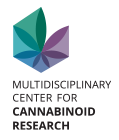Aharon M Eyal, Berneman Zeitouni, Dana , Tal, Dor , Schlesinger, Daniel , Davidson, Elyad M, and Raz, Noa . 2022. “Vapor Pressure, Vaping, And Corrections To Misconceptions Related To Medical Cannabis' Active Pharmaceutical Ingredients' Physical Properties And Compositions.”. Cannabis And Cannabinoid Research. doi:10.1089/can.2021.0173.
Medical cannabis products contain dozens of active pharmaceutical ingredients (APIs) derived from the cannabis plant. However, their actual compositions and relative doses significantly change according to the production methods. Product compositions are strongly dependent on processing step conditions and on components' evaporation during those steps. Review of the documentation presented to caregivers and to patients show erroneous data or misinterpretation of data related to the evaporation, for example, cannabinoids' boiling points, as well as confusions between terms, such as boiling, vaporization, and evaporation. Clarifying these aspects is essential for caregivers, for researchers, and for developers of manufacturing processes. Original and literature data were analyzed, comparing composition changes during various processing steps and correlating the extent of change to components' vapor pressures at the corresponding temperature. Evaporation-related composition changes start at temperatures as low as those of drying and curing and become extensive during decarboxylation. The relative rate of components' evaporation is determined by their relative vapor pressure and monoterpenes are lost first. On vaping, terpenes are inhaled before cannabinoids do. Commercial medical cannabis products are deficient in terpenes, mainly monoterpenes, compared with the cannabis plants used to produce them. Terms, such as "whole plant" and "full spectrum," are misleading since no product actually reflects the original cannabis plant composition. There are important implications for medical cannabis manufacturing and for the ability to make the most out of the terpene API contribution. Medical cannabis products' composition and product delivery are controlled by the relative vapor pressure of the various APIs. Quantitative data provided in this study can be used for improvement to reach better accuracy, reproducibility, and preferred medical cannabis compositions.
